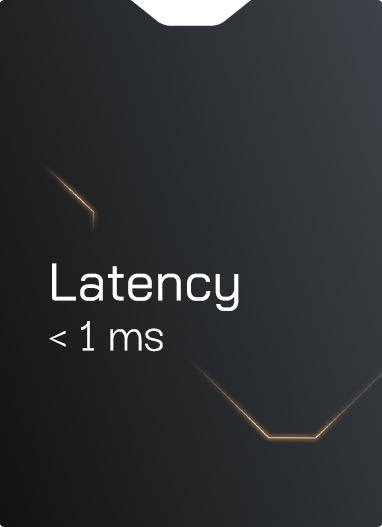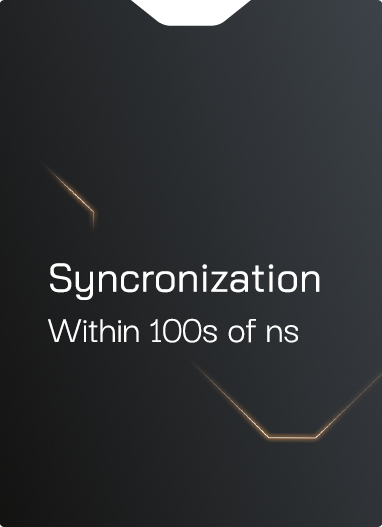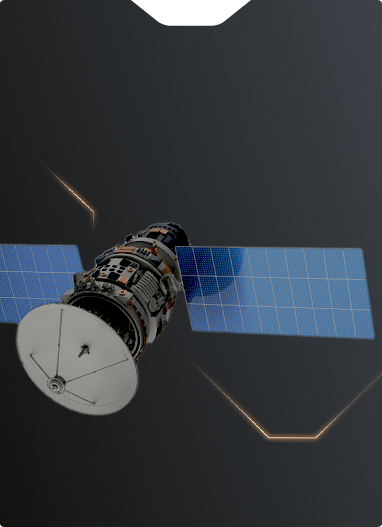- Home
- Time sensitive networking
Time-Sensitive Networking for Aerospace & Defense

Lead the Future: DO-178C DAL A TSN Aircraft Communications with LYNX MOSA.ic
In aerospace and defense, where systems must perform flawlessly and deliver data on time, TSN ensures the reliable network performance needed for these critical functions. Using LYNX MOSA.ic with TSN, you can connect all avionics systems, creating a safe and secure environment that meets the DAL A objectives of the DO-178C standard.
%
By 2028, the global time-sensitive networking (TSN) market is expected to grow at a compound annual growth rate (CAGR) of 58%.
%
TSN is estimated to reduce overall costs in avionics systems by 20%.
Why LYNX MOSA.ic for TSN
TSN is essential in environments where data must be transmitted and received with strict timing, ensuring information arrives exactly when needed. This precision is critical for avionics, radar, UAVs, and other systems where even a fraction of a second can impact success. In the aerospace and defense TSN ensures synchronized, real-time communication across networks, whether processing sensor data or coordinating multi-core operations.
LYNX MOSA.ic is an ideal platform for TSN in military and aerospace applications. Its advanced modular framework supports reliable, deterministic communication and real-time data handling across diverse and demanding environments, ensuring efficient connectivity and enhanced performance in mission-critical systems.

Why LYNX MOSA.ic for TSN
Features of LYNX MOSA.ic Time-Sensitive Networking for Aerospace and Defense
Determinism
- Flight-by-wire systems are highly affected by jitter, which should not exceed 1 us. TSN ensures that network communication is predictable and consistent, with data packets delivered within a specified time window, critical for real-time operations like flight control and radar processing.
Why LYNX MOSA.ic
- LYNX MOSA.ic supports multiple guest operating systems, including ARINC 653-conformant LynxOS-178 RTOS, Linux, bare metal, and single-thread unikernels, all designed specifically to fulfill the stringent needs of multithreaded and multiprocessor applications in safety-critical real-time systems. This guarantees real-time determinism of key subsystems, coupled with increased security, aimed to coordinate the data transmission, the data ingestion, and the data processing with accurate timing at each stage.


Predictable Latency
- Today, a typical flight control loop expects network latency below 1 ms. Expect a lower value to be required in the future. In aerospace and defense, Time-Sensitive Networking ensures predictable latency and reliable data delivery through traffic scheduling and priority-based queuing, critical for real-time operations in avionics and mission systems. This guarantees low, predictable latency communication even in complex environments.
Why LYNX MOSA.ic
- LYNX MOSA.ic provides the Lynx Certifiable Stack (LCS) with simple APIs to manage the scheduled traffic, the reserved traffic and the best effort traffic. The deep integration of the network stack with the network hardware minimizes the Lines of Code (LOC) required for DAL A certification, while still delivering data with precise timing, meeting the maximum accuracy expected by the TSN fabric hardware.


High Reliability
- Even a single frame loss can negatively impact the operation of flight control or the weapon release system. In mission-critical environments, TSN provides robust and dependable network performance and redundancy, needed to maintain system integrity, even under challenging conditions.
Why LYNX MOSA.ic
- The LYNX MOSA.ic Certifiable Stack offers a redundant data communication layer that is transparent to the applications. For best performance, the data replication and elimination in real time is offloaded to the hardware, keeping the Lines of Code (LOC) at a minimum, while preserving the network redundancy as requested by the Aerospace Profile (P802.1DP).


Time Synchronization
- The synchronization accuracy, with respect to the reference clock, is in the order of few 100s of nS. TSN enables precise synchronization of network devices, ensuring that operations across the network are perfectly timed and coordinated.
Why LYNX MOSA.ic
- LYNX MOSA.ic is designed to match the high demands of the Aerospace Profile (P802.1DP) for timing availability and precision. The architecture of the precision time protocol in the Lynx Certifiable Stack (LCS) is ready to handle multiple time domains for availability, the design is tailored to the underlying hardware for accurate time tracking, while the protocol implementation minimizes the convergence time.


Scalability and Flexibility
- Today, on a large passenger aircraft, the network includes around 5 switches and 100 nodes to transport thousands of data flows. Expect to see networks with several hundreds of nodes and tens of switch hops in the future. TSN scales to support everything from simple network setups to complex, multi-domain environments typical of modern aerospace and defense systems, ensuring flexibility for a wide range of use cases.
Why LYNX MOSA.ic
- On a traditional RTOS platform, all hardware control, real-time scheduling, security, multimedia, and application services are integrated into a single stack that serves all applications across all CPU cores. In contrast, LYNX MOSA.ic enables system architects to subdivide systems into smaller, independent stacks, each containing only the runtime dependencies required for each specific application and the cost savings of the Ethernet technologies are available to the airspace and defense community, even for the most critical and time dependent applications.


Lynx TSN Solution
Thanks to TSN, the proven performance and cost-efficiency of Ethernet are accessible to the aerospace and defense sectors. This technology is designed to meet the demands of even the most critical, time-sensitive applications, delivering reliable performance where it matters most.
What We Provide
Lynx is a leading developer of reliable embedded operating systems and software. LYNX MOSA.ic enables developers to create, certify, and deploy secure, mission-critical platforms using independent application modules. Real-time applications run as virtual machines on the LynxSecure separation kernel hypervisor, while the LynxOS-178 RTOS provides POSIX and ARINC runtime services.
LynxOS-178 includes the Lynx Certifiable Stack (LCS), a TCP/IP and UDP protocol stack designed for safety-critical avionics, offering manufacturers a low-cost, low-risk certification path for networked applications. LCS supports TSN features, including P802.1DP compliance, precision time protocols, and network redundancy. LynxSecure, LynxOS-178, and LCS are certifiable to DO-178C Level A.
Standardization Activities
IEEE started the P802.1DP™ project to define a profile for using IEEE 802.1 Time-Sensitive Networking (TSN) for aerospace onboard Ethernet communications. The project is a joint effort of the IEEE 802.1 Working Group and SAE Avionics Networks AS-1 A2 Committee. The profile aims to select the standards and features needed to deploy secure, highly-reliable converged networks, and enable certification as a basis for compliance and design assurance.
Lynx has been involved in the DP Working Group since 2022 and it is fully committed to comply with the standard.
Ecosystem
By leveraging a collaborative ecosystem of trusted partners, our TSN solution offers unmatched performance, reliability, and scalability for demanding, real-time environments.




What We Provide
Lynx is a leading developer of reliable embedded operating systems and software. Lynx MOSA.ic enables developers to create, certify, and deploy secure, mission-critical platforms using independent application modules. Real-time applications run as virtual machines on the LynxSecure separation kernel hypervisor, while the LynxOS-178 RTOS provides POSIX and ARINC runtime services.
LynxOS-178 includes the Lynx Certifiable Stack (LCS), a TCP/IP and UDP protocol stack designed for safety-critical avionics, offering manufacturers a low-cost, low-risk certification path for networked applications. LCS supports TSN features, including P802.1DP compliance, precision time protocols, and network redundancy. LynxSecure, LynxOS-178, and LCS are certifiable to DO-178C Level A.
Standardization Activities
IEEE started the P802.1DP™ project to define a profile for using IEEE 802.1 Time-Sensitive Networking (TSN) for aerospace onboard Ethernet communications. The project is a joint effort of the IEEE 802.1 Working Group and SAE Avionics Networks AS-1 A2 Committee. The profile aims to select the standards and features needed to deploy secure, highly-reliable converged networks, and enable certification as a basis for compliance and design assurance.
Lynx has been involved in the DP Working Group since 2022 and it is fully committed to comply with the standard.
Ecosystem
By leveraging a collaborative ecosystem of trusted partners, our TSN solution offers unmatched performance, reliability, and scalability for demanding, real-time environments.




Use Cases
TSN builds upon the highly successful family of Ethernet technologies. A question often asked, “I don't know what the next-gen network will be, but I know it will be called Ethernet.” With its massive market presence and substantial investments, Ethernet remains incredibly competitive in terms of price and performance. Now, thanks to TSN, the proven performance and cost-efficiency of Ethernet are accessible to the aerospace and defense sectors. This technology is designed to meet the demands of even the most critical, time-sensitive applications, delivering reliable performance where it matters most.
Satellites and Space
Satellites are an example of the convergence of mixed criticality traffic. The same network infrastructure handles the flight control and a massive amount of miscellaneous data from the payload. TSN isolate this traffic with bandwidth reservation or even handling these data as best effort.
Flight Control System: Platform Flight Control (PFC)
- Flight control and instruments, engine controls
Mission Control Systems: Payload Network (PLN)
- Communication transponders, cameras, scientific research instruments, etc.


Commercial Aircraft
Large commercial aircraft drive scalability requirements: the number of end nodes reaches an upper boundary of 100 today, expected to become 500 in the future. The Information Services are characterized by a medium throughput and are partially affected by jitter. TSN handles most of this data as traffic with bandwidth reservation.
Flight Control Systems: Aircraft Control Domain (ACD)
- Flight control and instruments, engine controls, autopilot, crew alert system
Airline Information Service Domain (AISD)
- Weather reports, engine and system performances, flight health management, connectivity off-aircraft
Cabin Management: Passenger Information and Entertainment Services Domain (PIESD)
- Passenger entertainment, audio broadcast, passenger Wi-Fi


Military Aircraft
The military aircrafts, either fixed-wing or rotary-wings, are at the forefront of the design for performance. The flight controls are characterized by a relatively low throughput, but this traffic is highly affected by jitter, which should stay within 1us. The upper boundary for tolerance to latency is tight, ranging from 1 ms today to an expected 100 us in the future. TSN handles this case as scheduled traffic, with a fine-grained configuration.
Flight Control Systems: Air Vehicle System (AVS)
- Flight controls and instruments, engine controls, autopilot, crew alert system
Mission Control Systems: Vehicle Mission System (VMS)
- Mission controls, sensor systems, video, radar, weapons
Zonal Architecture: Digital Backbone (DBB)
- Flight controls, mission control, sensor systems, video, radar, others


Want to learn more?
Learn more about the technical advantages of TSN, how it integrates with multi-core processor systems, and the best practices for implementing TSN in mission-critical environments.